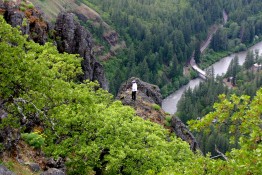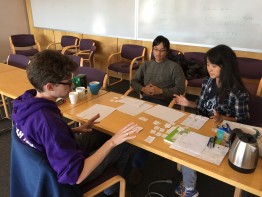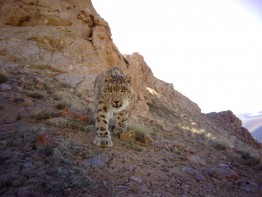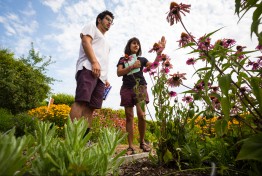Each year, hundreds of volunteers spread across Washington’s forests and grasslands to look for the state’s rarest, most sensitive plant species. Many of these endangered populations live in remote valleys or along unseen slopes and haven’t been seen in a decade or more. That’s where the University of Washington’s Rare Plant Care and Conservation program comes in. Its team of more than 200 volunteers fans out each summer to gather intel, one plant population at a time, on some 4,000 living in Washington state.
Read more at UW Today »Combating global climate change is fun and games for EarthGamesUW
EarthGamesUW, a new group at the University of Washington, is inspiring kids to combat climate change through gaming.
Read more »School of Forest and Environmental Sciences Student Involved in First Snow Leopard Collaring in Kyrgyzstan
School of Environmental and Forest Sciences doctoral student Shannon Kachel was recently involved in the capture and first successful satellite collaring of a snow leopard in Kyrgyzstan. The female, estimated to be between six and seven years old, was caught near the Kyrgyzstan-China border in Sarychat-Ertash Strict Nature Reserve. Snow leopards are among the most elusive and least studied of the big cats, and are listed as endangered on the IUCN Red List of Threatened Species.
Read more at SEFS' Offshoots blog »2015 UW Doris Duke Scholars Share Their Conservation Stories
Undergrads from across the country reflected on nature, conservation, social justice, and their own backgrounds at a recent Doris Duke Conservation Scholars event, bringing together a range of experiences with a singular focus: the need for inclusive conversations around the future of our planet.
Read more »New study uses high-speed search methods to better estimate climate threats to biodiversity
Climate change is perhaps felt most acutely in the Arctic right now, but by the start of the next century, animal species in the Amazon basin region will be harder hit as the Earth warms. In a study published this week in the journal PLOS ONE, researchers have used new high-performance computing methods and comprehensive data on the distribution of thousands of species to map the threat that climate change poses to birds, mammals and amphibians across the Western Hemisphere.
Read more at UW Today »





